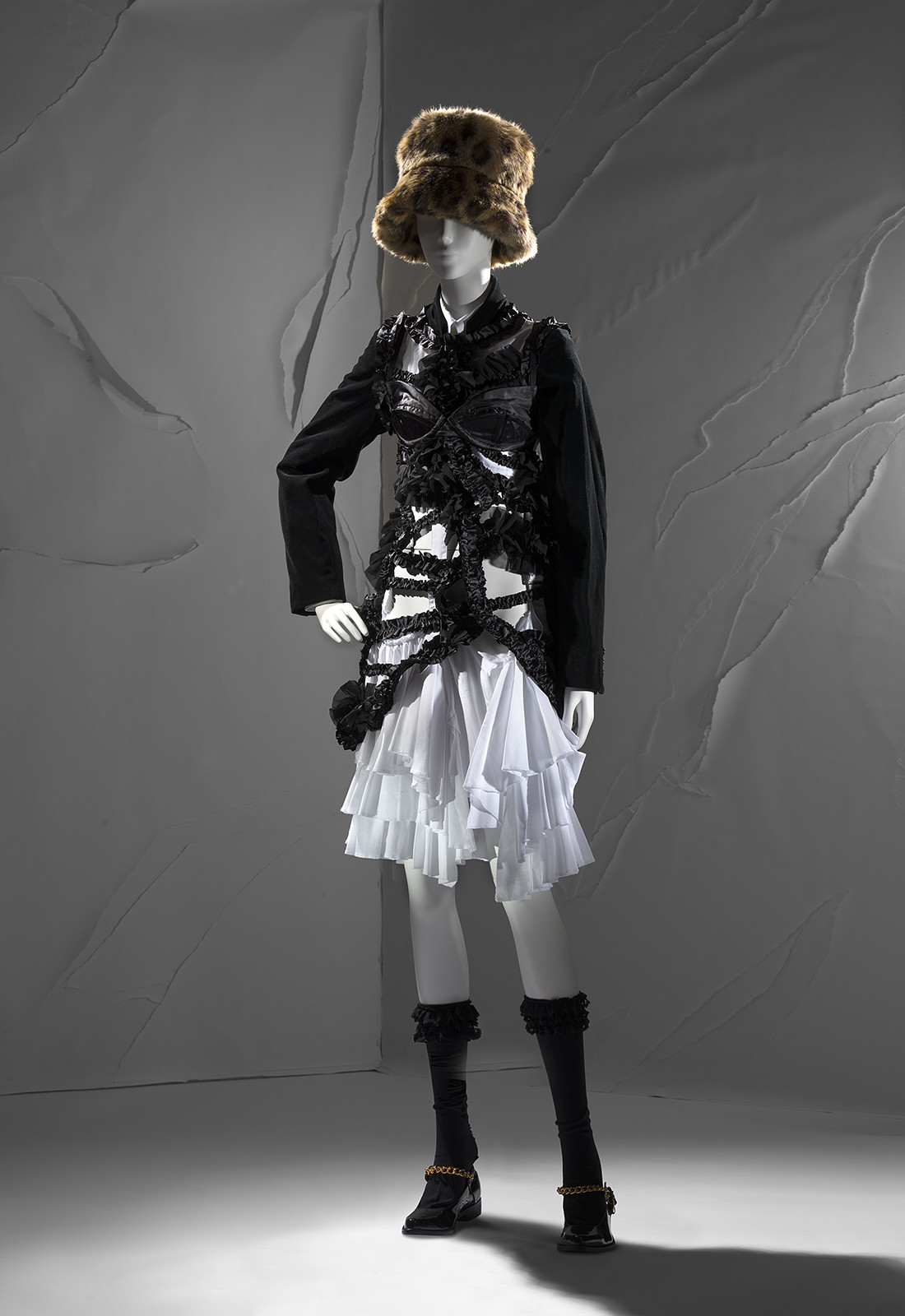The latest exhibition at the National Gallery of Victoria (NGV) inspired by Rei Kawakubo and her vision for fashion will blow you away.

February 17th, 2020
In the mid-to-late 1970s, Rei Kawakubo was starting to create ripples in fashion in Japan. A few years later, in 1982, her designs presented in Paris polarized the audience. Heading Comme des Garcons for almost four decades, her unique vision inspired this latest exhibition at the National Gallery of Victoria (NGV), along with Takamasa Takahashi’s collection, donated to the NGV since the early noughties. “You could say that a large percentage of the fashion press were affronted, while others recognised Rei’s ‘radical beauty’ in Rei’s designs,” says Danielle Whitfield, Curator Fashion & Textiles at the NGV. “It was certainly a strong shift from the folkloric styles shown at that time,” she adds.
Thanks to Takahashi’s foresight (including collecting fashion from Junya Watanabe and Tao Kurihara, protégés of Kawakubo’s) and the NGV’s own collection of Comme des Garcons, ‘Collecting Comme’ is able to showcase over 60 garments from milestone collections. As well as earlier designs such as the ‘Patchwork X’ collection from Spring/Summer ’83, there’s the watershed fashion moment when Kawakubo presented her ‘lumps and bumps’ collection for Spring/ Summer ’97. Removable padding inserted created an entirely new silhouette for women, with a shift away from the hourglass model to one that was distorted. “Rei presented a completely different relationship between clothing and the body, questioning the notion of the traditional female beauty and form,” says Whitfield, pointing out the abstracted shapes set within a series of ‘exploded cubes’ in the two galleries (E26 and E27). Accompanying films of the Comme des Garcons collections, including footage of the 1982 collections shown in Paris, will take viewers back to another time, when fashion was experiencing a ‘paradigm shift’. “These garments form some of the purest ideas expressed by Rei, whether it’s about ‘deconstruction’ or her later punk-inspired collections in 2010,” she adds.

‘Adult Delinquent’, presented in 2010, is represented in this exhibition in the form of a sheer shirt-style dress adorned with leather harnesses. Two decades earlier, in 1991 (at the start of a worldwide economic recession), Kawakubo presented her ‘Sheik Punk’ designs, including a red PVC skirt, worn with fishnet stockings and a tuxedo-style jacket adorned with shiny PVC lapels. “You could easily say that Rei Kawakubo is one of the most visionary fashion designers of the 20th century, shaping the way we look at fashion, both then and now,” says Whitfield, who also acknowledges her influence on numerous other fashion designers, such as Martin Margiela. “This show is really exploring how a vision can impact on so many, whether you’re a designer or simply one who appreciates new and innovative ideas.” Although one could easily understand such as a couturier producing one-off pieces, Comme des Garcons is far from being a bespoke atelier that only services an elite few (Comme is virtually a household name with stores in every major fashion capital and distributed worldwide).

Tony Newsham, who operated Trellini menswear stores in both Melbourne and in Sydney from 1977 through to the mid-1990s, was Australia’s largest retailer for Comme des Garcons. He also went onto become Vice President of Comme for 13 years, based in New York. “Rei always designs for herself. That’s what makes her so unique,” says Newsham.
By 1983, a year after Comme des Garcons was first shown in Paris, the collections headed to the Trellini stores Down Under. At first, there was some resistance from Newsham’s clientele. But slowly, men ditched their stitched-up suits and the demand for Comme grew. “Rei has always aligned herself to the arts and architectural communities,” says Newsham, recalling the New York store in Chelsea transformed by the UK architectural practice Future Systems. “The queues to get into the store went on for months, particularly with all the coverage by The New York Times,” he adds. And although not every new design was immediately understood by buyers (including Saks and Bergdorf Goodman), Newsham was often able to share Kawakubo’s vision with the more sceptical. “I found that if you explained the ideas behind each collection, the buyers became more receptive, irrespective of how avant-garde it was,” says Newsham.

For Whitfield and Takahashi, this exhibition will not only tell a story to those who have encountered Kawakubo’s designs from the early 1980s to the present, but also inform a new audience of fashion and design buffs decades later.
‘Collecting Comme’ opens on November 1st 2019 and runs until 26th July 2020 at the National Gallery of Victoria
If you liked this article, we think you’d enjoy a conversation with comedian, presenter and ‘design nerd,’ Tim Ross. Stay in the loop, join our weekly newsletter.
A searchable and comprehensive guide for specifying leading products and their suppliers
Keep up to date with the latest and greatest from our industry BFF's!

BLANCO launches their latest finish for a sleek kitchen feel.

The Man x Machine x Material collaboration by Jarrod Lim and The American Hardwood Export Council explores how generative AI can enhance design processes while also revealing the areas where human intuition remains irreplaceable.

Notable for its adaptive reuse and retail presence, Rosebery Engine Yards is a landmark mixed-use project in Sydney’s inner south.

Melbourne’s epic Design Week is almost upon us. I put it out to my friends and colleagues, asking what they can’t wait to see, and have collated a top 12 program highlights list for you here.
The internet never sleeps! Here's the stuff you might have missed

In this episode of Stories Indesign podcast, Timothy Alouani-Roby speaks to Greens MP and spokesperson for housing and homelessness, Max Chandler-Mather.

With a rapidly growing global population that is becoming increasingly urbanised, competition for space and resources in our cities is fierce.